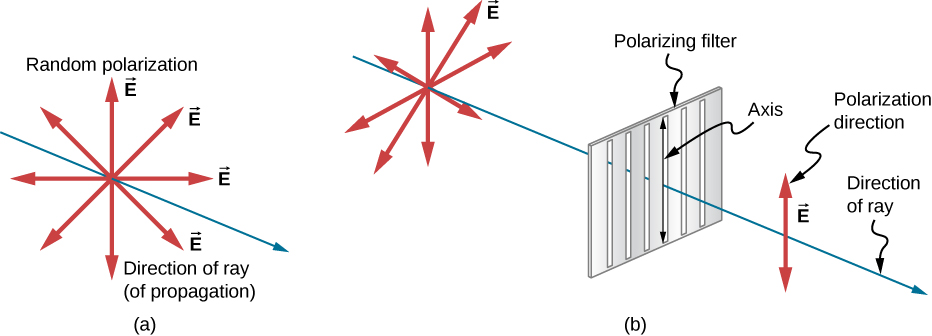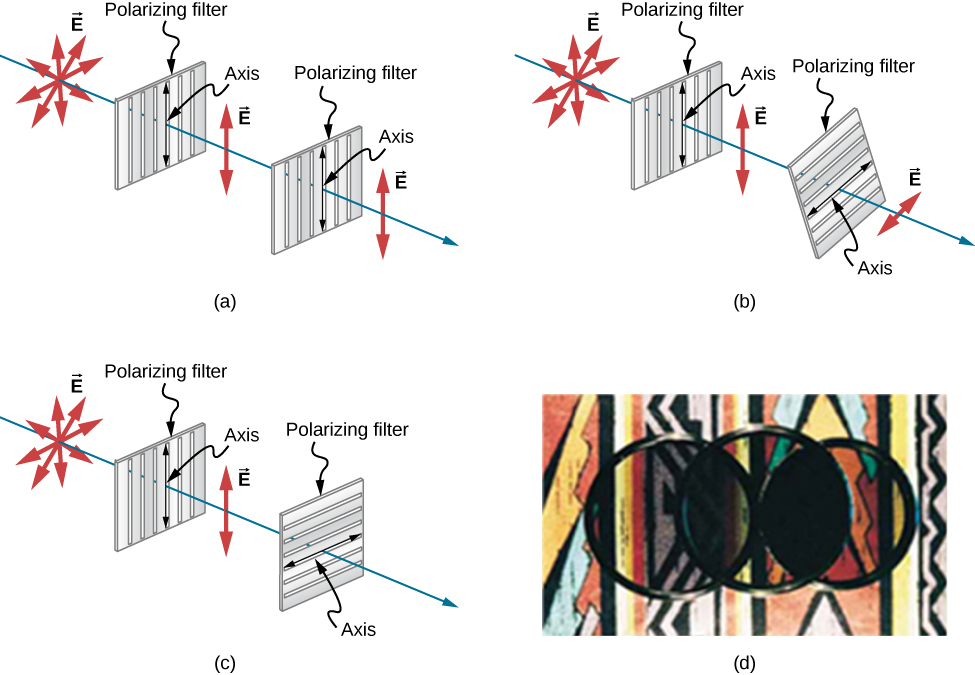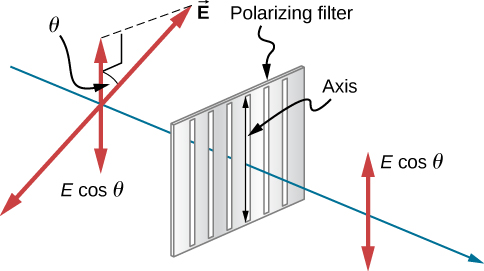| << Chapter < Page | Chapter >> Page > |
The Sun and many other light sources produce waves that have the electric fields in random directions ( [link] (a)). Such light is said to be unpolarized , because it is composed of many waves with all possible directions of polarization. Polaroid materials—which were invented by the founder of the Polaroid Corporation, Edwin Land—act as a polarizing slit for light, allowing only polarization in one direction to pass through. Polarizing filters are composed of long molecules aligned in one direction. If we think of the molecules as many slits, analogous to those for the oscillating ropes, we can understand why only light with a specific polarization can get through. The axis of a polarizing filter is the direction along which the filter passes the electric field of an EM wave.

[link] shows the effect of two polarizing filters on originally unpolarized light. The first filter polarizes the light along its axis. When the axes of the first and second filters are aligned (parallel), then all of the polarized light passed by the first filter is also passed by the second filter. If the second polarizing filter is rotated, only the component of the light parallel to the second filter’s axis is passed. When the axes are perpendicular, no light is passed by the second filter.

Only the component of the EM wave parallel to the axis of a filter is passed. Let us call the angle between the direction of polarization and the axis of a filter . If the electric field has an amplitude E , then the transmitted part of the wave has an amplitude ( [link] ). Since the intensity of a wave is proportional to its amplitude squared, the intensity I of the transmitted wave is related to the incident wave by
where is the intensity of the polarized wave before passing through the filter. This equation is known as Malus’s law .


Notification Switch
Would you like to follow the 'University physics volume 3' conversation and receive update notifications?